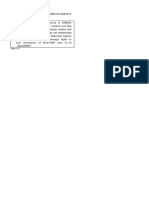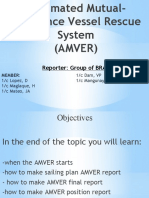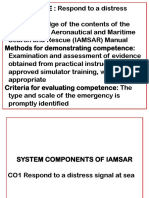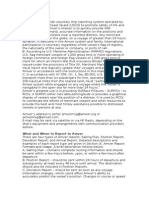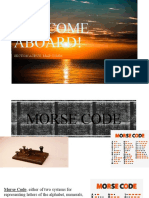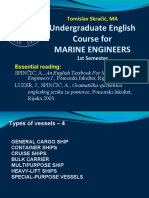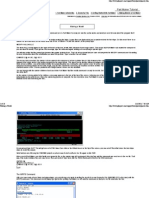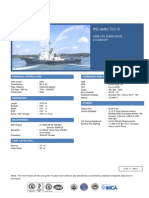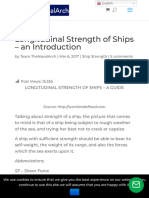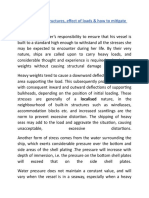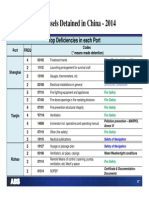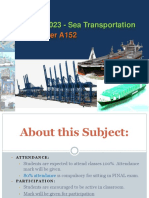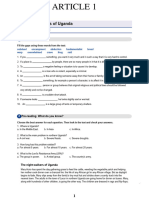0% found this document useful (0 votes)
73 views29 pages9 Ship Reporting System (Autosaved)
The document outlines the General Operator's Certificate for the Global Maritime Distress and Safety System (G.O.C for GMDSS) and details the role and methods of ship reporting systems, which enhance safety and efficiency in maritime navigation and environmental protection. It describes three main systems: the Automated Mutual-assistance Vessel Rescue System (AMVER), the Japanese Ship Reporting System (JASREP), and the Modernized Australian Ship Tracking and Reporting System (MASTREP), each with specific reporting requirements and operational details. Additionally, it covers the Long Range Identification and Tracking of Ships (LRIT) system, which aims to improve maritime security and safety through global tracking of vessels.
Uploaded by
k58315728Copyright
© © All Rights Reserved
We take content rights seriously. If you suspect this is your content, claim it here.
Available Formats
Download as PPTX, PDF, TXT or read online on Scribd
0% found this document useful (0 votes)
73 views29 pages9 Ship Reporting System (Autosaved)
The document outlines the General Operator's Certificate for the Global Maritime Distress and Safety System (G.O.C for GMDSS) and details the role and methods of ship reporting systems, which enhance safety and efficiency in maritime navigation and environmental protection. It describes three main systems: the Automated Mutual-assistance Vessel Rescue System (AMVER), the Japanese Ship Reporting System (JASREP), and the Modernized Australian Ship Tracking and Reporting System (MASTREP), each with specific reporting requirements and operational details. Additionally, it covers the Long Range Identification and Tracking of Ships (LRIT) system, which aims to improve maritime security and safety through global tracking of vessels.
Uploaded by
k58315728Copyright
© © All Rights Reserved
We take content rights seriously. If you suspect this is your content, claim it here.
Available Formats
Download as PPTX, PDF, TXT or read online on Scribd
/ 29












